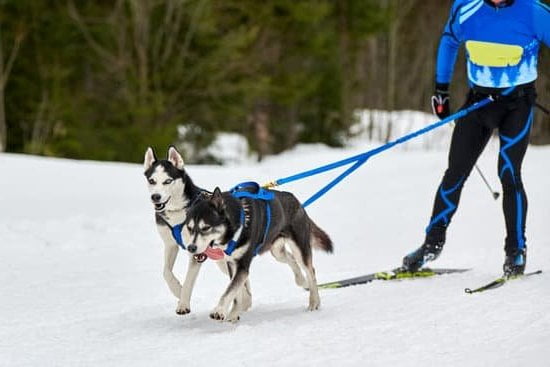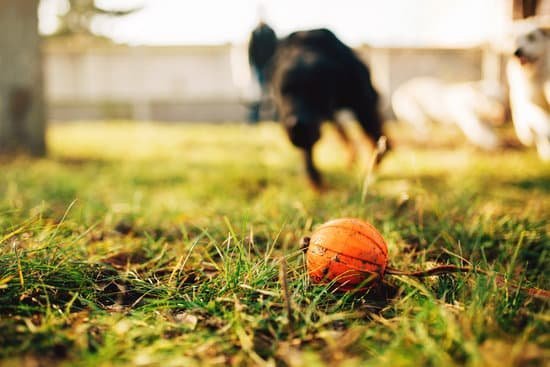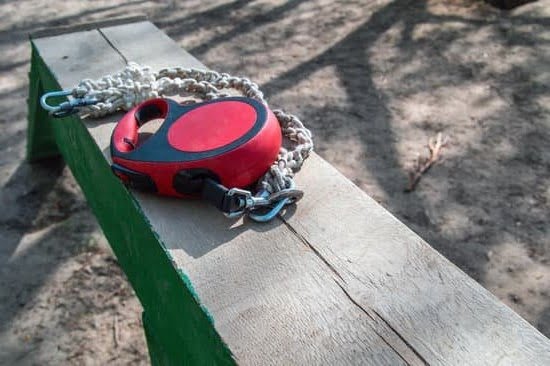Are you asking yourself, “Why is my dog not getting potty training?” It can be frustrating when your furry friend seems to struggle with learning proper potty habits. In this article, we will delve into the possible reasons behind potty training difficulties and explore different strategies to help you and your dog succeed in the training process.
Understanding your dog’s behavior is crucial when it comes to addressing potty training challenges. Dogs may exhibit stubborn or inconsistent behavior for various reasons, and it’s essential to identify these factors in order to effectively address them. From potential health issues to environmental influences, there are several aspects that can impact your dog’s ability to grasp potty training.
Consistency plays a significant role in a dog’s learning process, especially when it comes to potty training. Establishing a routine and maintaining it consistently can make a world of difference in helping your dog understand what is expected of them. Additionally, positive reinforcement is an important tool in motivating your furry companion during potty training. By understanding these key elements, you can work towards creating a successful potty training experience for both you and your beloved pet.
The Role of Consistency in Potty Training
Consistency is key in potty training your dog. Without a consistent approach, it will be difficult for your dog to understand what is expected of them, leading to confusion and frustration for both you and your pet. Consistency in potty training involves several aspects, including the use of commands, timing, and praise.
Use of Commands
Using a specific command when you take your dog outside to go to the bathroom can help them understand what is expected of them. For example, saying “go potty” or “do your business” every time you take them out can create an association with the act of eliminating waste and the command.
Timing
Consistency in timing is also crucial in potty training. Taking your dog out at regular intervals throughout the day, such as after meals, playtime, and waking up from naps, can help them establish a routine for going to the bathroom.
Praise
Consistently praising your dog when they successfully go to the bathroom outside will reinforce the behavior. Positive reinforcement can include verbal praise, petting, or giving treats as a reward. This consistent positive feedback will motivate your dog to continue exhibiting the desired behavior.
By maintaining consistency in these areas of potty training, you can positively impact your dog’s learning process and make it easier for them to understand what is expected of them when it comes to going to the bathroom.
Identifying Potential Health Issues That May Be Impacting Potty Training Progress
When your dog is having difficulty with potty training, it’s important to consider potential health issues that may be impacting their progress. Here are some common health problems that can affect your dog’s ability to be successfully potty trained:
- Urinary tract infections
- Gastrointestinal issues
- Incontinence
- Digestive problems
If you notice any signs of these health issues, such as frequent accidents, excessive thirst, or discomfort during elimination, it’s crucial to consult with a veterinarian to rule out any medical causes for your dog’s potty training difficulties.
In addition to physical health problems, it’s also important to consider how your dog’s emotional and mental well-being can impact their potty training progress. Anxiety, fear, and stress can all contribute to accidents in the house. Understanding and addressing these emotional factors is essential for successful potty training.
Ensuring your dog is in good physical and emotional health is a critical step in addressing potty training difficulties. By ruling out any potential medical or psychological issues, you can set the stage for more effective training and support your dog in learning appropriate bathroom behaviors.
The Importance of Positive Reinforcement in Dog Training
When it comes to potty training your dog, positive reinforcement is key in motivating them to exhibit the desired behavior. Dogs, like humans, respond well to encouragement and rewards, making it an effective method for teaching them where and when to go potty.
Understanding Positive Reinforcement
Positive reinforcement involves rewarding your dog with treats, praise, or affection when they exhibit the desired behavior. When it comes to potty training, this means showering your dog with praise and treats immediately after they’ve successfully relieved themselves in the designated potty area. This creates a positive association with the act of going potty in that specific spot.
Effective Motivation Techniques
In order to effectively motivate your dog during potty training, it’s important to find out what motivates them the most. Some dogs may be food motivated, while others may respond better to verbal praise or playtime. Understanding what drives your dog will help you tailor your positive reinforcement techniques to their specific needs, increasing the likelihood of successful potty training.
Consistency Is Key
Consistency plays a crucial role in using positive reinforcement for potty training. It’s essential to reward your dog every time they exhibit the desired behavior without exceptions. This consistent reinforcement helps your dog understand what is expected of them and reinforces the behavior you want them to repeat.
By incorporating positive reinforcement techniques into your dog’s potty training routine, you can effectively motivate them and encourage them to exhibit good bathroom habits. Remember that every dog learns at their own pace, so patience and consistency are key when using positive reinforcement for potty training.
Common Mistakes to Avoid When Potty Training Your Dog
Potty training a dog can be a challenging task, and there are several common mistakes that pet owners make which can hinder the process. One of the most common errors is not being consistent with the training. Dogs thrive on routine, and inconsistency can lead to confusion and setbacks in their learning process. It’s important to establish a regular potty schedule for your dog and stick to it as much as possible.
Another mistake to avoid is punishing your dog for accidents. Punishment can create fear and anxiety in dogs, making it even more difficult for them to learn proper potty habits. Instead, focus on positive reinforcement by rewarding your dog with treats, praise, or playtime when they successfully go potty outside. This will help motivate them to continue exhibiting the desired behavior.
It’s also crucial to avoid neglecting your dog’s health while potty training. Health issues such as urinary tract infections or digestive problems can lead to accidents in the house. If you notice any unusual symptoms or changes in your dog’s behavior, consult with a veterinarian to rule out any underlying health issues that may be impacting their potty training progress.
| Common Mistakes | Impact |
|---|---|
| Inconsistency in training | Confusion and setbacks in learning process |
| Punishing for accidents | Fear and anxiety; hindering learning process |
| Neglecting health issues | Accidents due to underlying health problems |
Establishing a Routine for Success
Consistency is key when it comes to potty training your dog. One way to ensure consistency is by establishing a routine that works for both you and your pet. Dogs thrive on predictability, so having a set schedule for meals, bathroom breaks, and playtime can greatly aid in their potty training progress.
When creating a potty training schedule, it’s important to consider your dog’s age, breed, and individual needs. Puppies, for example, may need more frequent bathroom breaks compared to adult dogs. Additionally, certain breeds may have different bathroom preferences or physical capabilities that should be taken into account.
A typical potty training schedule may include taking your dog outside first thing in the morning, after meals, before bedtime, and at regular intervals throughout the day. It’s also important to pay attention to your dog’s behavior and cues. Signs that your dog needs to go potty include pacing, whining, circling, or sniffing the ground. By being aware of these cues and incorporating them into your schedule, you can effectively prevent accidents in the house.
| Potty Training Schedule | Recommended Frequency |
|---|---|
| Morning Bathroom Break | Upon waking up |
| After Meals | About 15-30 minutes after eating |
| Before Bedtime | Right before going to sleep for the night |
| Throughout the Day | Every 3-4 hours (for puppies); every 4-6 hours (for adult dogs) |
The Influence of Environment on Potty Training
When it comes to potty training your dog, the environment plays a crucial role in their training progress. The surroundings in which your dog lives can have a significant impact on their ability to learn and consistently follow potty training guidelines. Understanding how the environment influences your dog’s behavior is essential for successfully addressing any potty training issues.
Some ways in which the environment can influence potty training progress include:
- The presence of other pets: If you have multiple pets in the household, it may create competition for territory and may cause stress or anxiety in your dog, making it difficult for them to focus on potty training.
- The layout of your home: The layout of your home can affect your dog’s ability to access an appropriate potty area or signal when they need to go outside.
- Noisy or high-traffic areas: A noisy or high-traffic environment can be distracting for your dog and may make it challenging for them to concentrate on learning proper potty habits.
To address environmental factors that may be affecting your dog’s potty training, it’s important to:
- Create a designated potty area: Setting up a specific spot outside where your dog can eliminate will help establish a routine and provide consistency.
- Minimize distractions: Ensure that the area where you take your dog to go potty is quiet and free from distractions, allowing them to focus on the task at hand.
- Establish a predictable routine: Dogs thrive on routine, so creating a consistent schedule for potty breaks will help them understand when and where they should go.
By taking these environmental influences into account and making adjustments as needed, you can create an optimal setting for successful potty training for your furry friend.
Seeking Professional Help
In conclusion, potty training your dog can be a challenging but ultimately rewarding process. Understanding your dog’s behavior and the role of consistency in training are key factors in addressing potty training difficulties. It’s also important to consider potential health issues that may be affecting your dog’s ability to learn, as well as the use of positive reinforcement to effectively motivate them during their training.
Avoiding common mistakes and establishing a consistent routine are also crucial components of successful potty training. Your dog’s environment can also play a significant role in their progress, so it’s essential to create a suitable space for them to learn and thrive. However, if despite all efforts, you find that your dog is not making progress with potty training, it may be time to consider seeking professional help.
Hiring a dog trainer or behavior specialist can provide valuable support and guidance in addressing any persistent potty training issues. They have the expertise and experience to assess your dog’s specific needs and develop a personalized plan for effective training. By acknowledging when professional help is necessary, you can ensure that your dog receives the assistance they need to successfully master potty training, leading to a happier and healthier relationship between you and your furry friend.
Frequently Asked Questions
What to Do if Your Dog Won’t Potty Train?
If your dog won’t potty train, it’s important to first rule out any potential medical issues by consulting with a veterinarian. Once health concerns have been addressed, it’s essential to reevaluate the potty training method being used and consider making adjustments.
Consistency is key, so ensuring that everyone in the household is on the same page and using the same approach is crucial. Keeping a regular schedule for feeding and bathroom breaks, offering positive reinforcement, and being patient can also help in successfully potty training a dog.
Why Is My Dog Not Progressing With Potty Training?
Several factors could be contributing to a lack of progress in potty training for a dog. It’s possible that the chosen training method isn’t effective for the individual dog or that there are underlying medical issues hindering progress.
Other factors like changes in routine, inconsistent reinforcement, or stress and anxiety can also impact potty training success. It’s important to evaluate these potential contributing factors and make necessary adjustments to facilitate better progress in potty training.
Do Some Dogs Never Learn to Potty Train?
While some dogs may take longer to learn proper potty habits than others, most dogs are capable of learning to be effectively potty trained with patience and consistent effort from their owners. However, certain medical conditions or behavioral issues may make it more challenging for some dogs to fully grasp potty training.
In these cases, professional guidance from a veterinarian or animal behaviorist may be necessary to address any underlying issues that are impeding successful potty training efforts with the dog.

Welcome to the blog! I am a professional dog trainer and have been working with dogs for many years. In this blog, I will be discussing various topics related to dog training, including tips, tricks, and advice. I hope you find this information helpful and informative. Thanks for reading!





